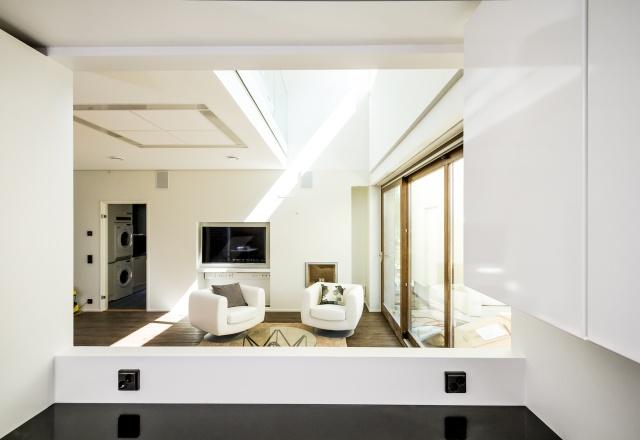Our lives are evolving... our homes too!
Evolving, modular, hybrid... More than ever before, homes are adapting to our lifestyles and needs. From step families to single-parents, or teleworking crew, households have gone chameleon! Here we analyze this megatrend, where the home becomes a hybrid, modular, and multi-purpose space.


Housing: a mirror for our times?

Housing? It’s no longer about lifetime acommodation. The proof? Today it is quite common for 70 year old couples to move house. That was unthinkable 50 years ago!
Raphaël, age 9, is revising his dictation at the kitchen table. His mum sits next to him, supervising his homework while she works from home. Settled comfortably on the sofa, her eldest son is watching videos on his smartphone, while his step-dad, a freelancer, is writing an article at the living room table. This scene provides a good snapshot of Western society, with step families, teleworking, home schooling and freelancing.
“It’s always important to see housing in context, because it’s a faithful reflection of its time”, explains Hélène Subremon, a housing sociologist. “Cohabiting isn’t a new phenomenon, it was even the norm less than a century ago in the West. And it still is today elsewhere. But what is new are the reasons for cohabiting today.”
Chameleon homes

Crowded cities, the break-up of the nuclear family, demographic expansion, an ageing population... and the Covid-19 pandemic: so many factors that require a new way of living. Faced with this societal puzzle, housing is now adapting and has gone chameleon. “With the high cost of accommodation accompanied by later entry into the labor market... Owning your own home is no longer a lifelong goal. What we expect is that housing will adapt to different phases of life, even changing how it is used (rental, flatsharing, ownership, etc.).”
Transformative, multi-purpose, and evolving: housing is adapting to us, not the other way around! As if playing with building blocks, we tailor the rooms to suit our needs, seeking maximum modularity for the space. The open-plan kitchen is truly emblematic of this trend. Once the reserve of women and household chores the kitchen has become a multi-functional space that opens out onto the living room, a place where we work, chat, cook, and sit with guests.
“All of these observations led me (along with a team of designers) to imagine different user habits for Versâtis, a 3-in-1 table designed for this new lifestyle” Hélène Subremon adds. Simultaneously a hob, a trendy ceramic worktop, and a smart workspace, the Versâtis island from EuroKera breaks down the boundaries between living room and dining table, revealing a fun space that’s made for socializing.
When the occupancy of the house changes, when everyone is looking for a space to work in, other clever ideas can be used to rearrange the space, such as folding screens or removable partitions. To that end, the Placo© translucent or plaster partitions provide a playful solution: in a bedroom they can screen a rainwater shower, or at half-height in a doorway they form a division from the living room.
Aware of new family configurations, housing industry players are now designing transformative housing with variable layouts. Here, a loggia can be partitioned off to create an office space. There, a dressing room that can become an extension to the living room... The advantage? Everything is planned – partitions, drainage – to make the transformation a breeze!
Other transformative trends include the mini-studio adjoining an apartment, to be used as an extra bedroom, as student accommodation, or to care for an elderly relative, or isolate a confined relative...
A new order with the Millennials
In high density cities like New York, other forms of housing are emerging... like micro-houses. Within these tight spaces, good use is found for centimeter, and all of the furniture is modular and collapsible!
And that’s just the start. With the Millennials, housing will enter a new era of plug and play and sustainable development. “Young people want a cosy, multifunctional space with abundant smart features, and that takes new environmental challenges into account! This raises questions of well-being in the home, as well as how technology can serve people...”
Transformative, functional, and with a low environmental impact: housing hasn’t finished evolving just yet!
Photo credits: Saint-Gobain / Jiri Zabran / Matthias Hein & Juri Troy / Victor Zastol'skiy - Fotolia
The latest stories
All stories
View more



